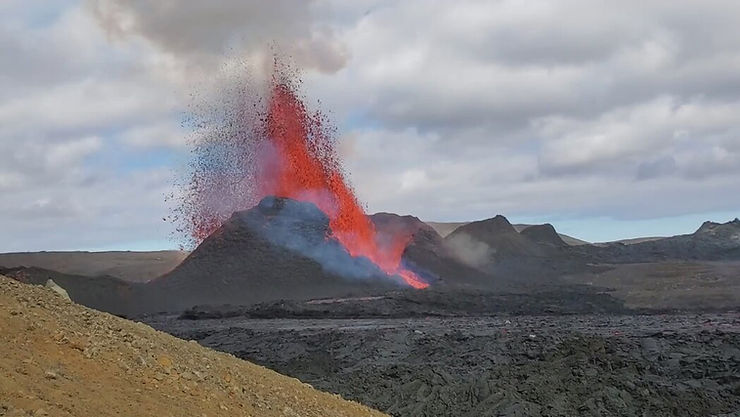By: Alina Zheng
The Fagradalsfjall volcano was a treasure that held unexpected wonders and captivated people from all over the world. It broke 781 years of silence.
The Fagradalsfjall volcano located on the southern peninsula in Iceland, shocked the world when it erupted on March 19th, 2021, after remaining dormant for 781 years. Instead of backing away, geologists and spectators inched closer to it, yearning to learn more and witness a once-in-a-lifetime phenomenon.
Scientists wanted to discover the unknowns hidden below the volcano. They wanted to know the action in places light could not reach, miles underground. A helicopter gathered a little lava to uncover more information, and the samples were divided and sent to labs to be analyzed. Unexpectedly, the lava was filled with crystals.
By using samples gathered during the Fagradalsfjall eruption, scientists have learned more about the movement that occurs below the surface of the oceanic volcano. In June, a paper published in the journal Nature Communications found that the lava crystal samples were chemically composed of a variety of materials from different areas of the mantle. This gave scientists a more detailed idea of the factors that play into volcanic eruptions.
Frances Deegan, a volcanologist at Sweden’s Uppsala University and a co-author of the Nature paper described his findings’ importance:
“We have a really detailed record of the different types of composition that we can find in the mantle now, and it must be very heterogeneous, very variable.”
Since the Fagradalsfjall lava originated from a deep reservoir of magma, researchers like Ed Marshall, a geochemist at the University of Iceland, hurried to collect samples of the lava. Marshall embraced the opportunity to study an erupting volcano nearby. “We were working all hours — you’re asleep and the volcano’s still erupting and you’re like, ‘I got to get back out there.’ But it’s hard to describe how rare this kind of thing is.”
Olafur Flovenz, the director of Iceland Geosurvey, published a paper in the journal Nature Geosciences, reporting that the periodic volcanic activity between the Eurasian and North American tectonic plates was not caused by magma accumulating in the crust. Instead, it was caused by the release of carbon dioxide from the Mohorovicic discontinuity, a deep magma pooling located between the mantle and crust.
Dr. Flovenz said, “For the first time, more or less, we are looking at an active eruption on our oceanic crust where the lava is directly erupting from the mantle source,” because when Fagradalsfjall erupted, the molten rock pumped from the volcano came straight from the Mohorovicic discontinuity.
Many scientists have learned more about Fagradalsfjall’s eruption and revealed new information about volcanoes through this experience. “These are very exciting times. I had never had the hope that I would live to see this unrest and eruptions on this peninsula,” said Dr. Flovenz. “This has been extremely interesting for the geosciences community.”











